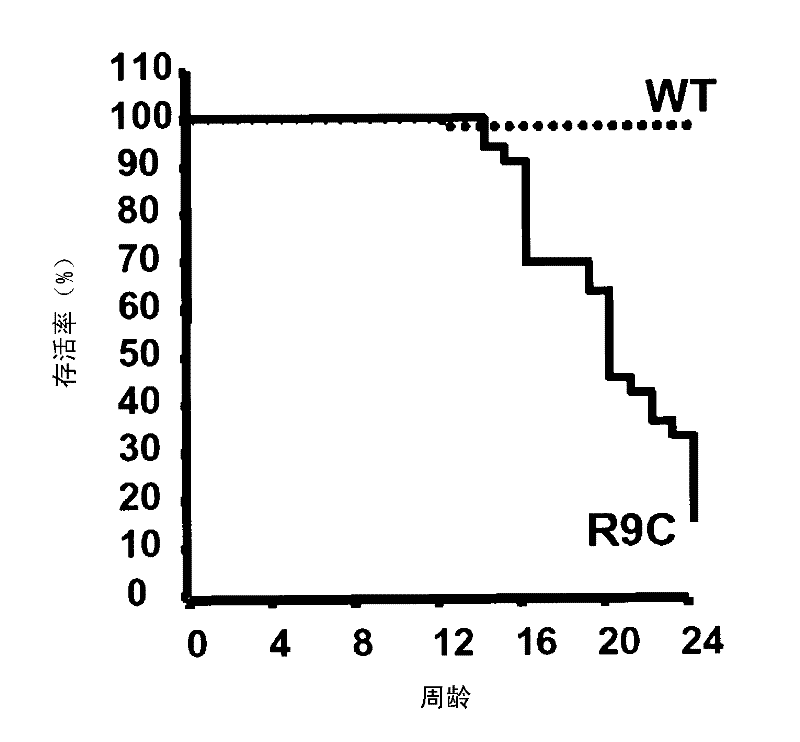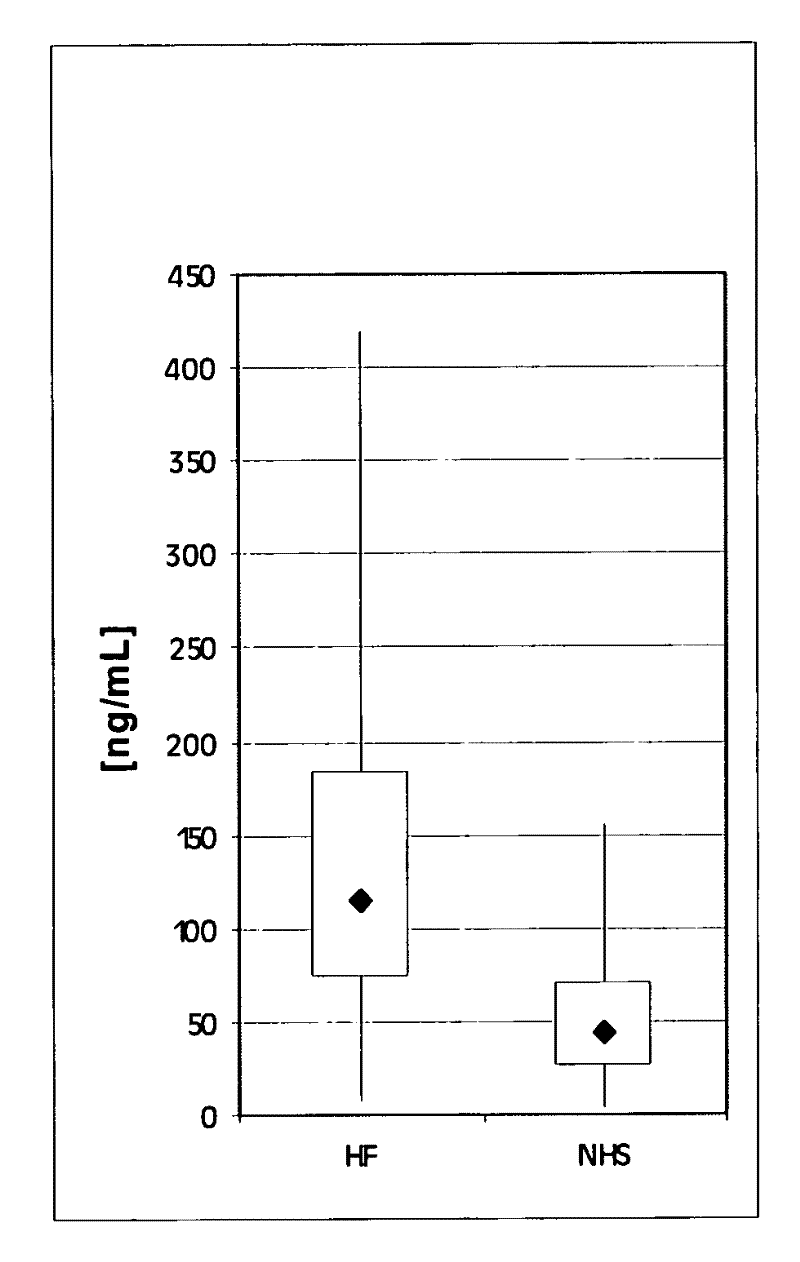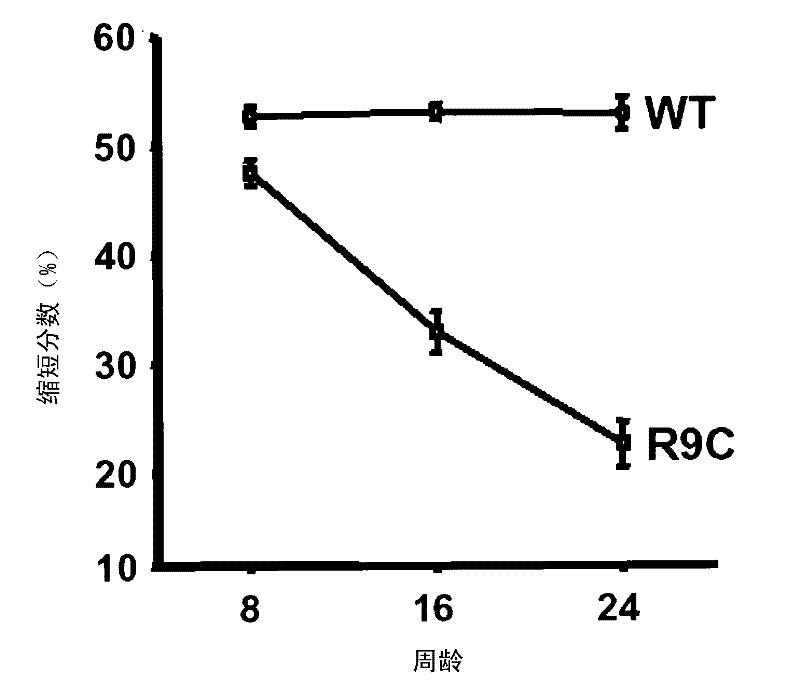Use of biglycan in the assessment of heart failure
A heart failure, proteoglycan technology, applied in the field of the application of biglycan in the assessment of heart failure, can solve the problem of insufficient single marker
- Summary
- Abstract
- Description
- Claims
- Application Information
AI Technical Summary
Problems solved by technology
Method used
Image
Examples
Embodiment 1
[0179] Mouse Model of Heart Failure
[0180] 1.1 R9C mouse model
[0181] Hereditary human dilated cardiomyopathy has been reported to arise from an Arg9 to Cys transition in the human phospholamban (PLN) gene (PLN-R9C) (Schmitt, J.P. et al., Science 299 (2003) 1410-1413). Onset of dilated cardiomyopathy in affected patients generally begins during adolescence, followed by progressive deterioration of cardiac function, leading to crisis and death. Transgenic mouse models of this mutation display a similar cardiac phenotype to affected patients with dilated cardiomyopathy, reduced cardiac contractility, and premature death (Schmitt et al., 2003, supra).
[0182] We determined survival curves for transgenic mice. PLN-R9C mice had a median survival of only ~20 weeks, of which less than 15% persisted through 24 weeks ( Figure 1A ). The first recorded death in the PLN-R9C line was observed at 12 weeks of age, whereas only one wild-type control mouse died over the 24 week perio...
Embodiment 2
[0196] microarray analysis
[0197] Crude tissue preparations are used for microarray analysis without further isolation of organelles. Microarray data analysis methods are described in the literature (see, eg, US 5,807,522; Robinson, W.H. et al., Nat. Med. 8 (2002) 295-301; Robinson, W.H. et al., Arthritis Rheum. 46 (2002) 885- 893).
[0198] Sample preparation and mass spectrometry
[0199] Cardiac homogenization and organelle isolation
[0200] The heart was isolated, the atria were removed, and the ventricles were carefully minced with a razor blade and washed extensively with ice-cold PBS (phosphate-buffered saline) to remove excess blood. Using a loose-fitting hand-held glass homogenizer, dissolve the tissue in 10 ml of lysis buffer (250 mM sucrose, 50 mM Tris-HCl pH 7.6, 1 mM MgCl2, 1 mM DDT (dithiothreitol), and 1 mM PMSF ( phenylmethylsulfonyl fluoride) for 30 s. All subsequent steps were performed at 4 °C. The lysate was centrifuged at 800 x g for 15 min in a ben...
Embodiment 3
[0209] Statistical evaluation of data obtained in model systems
[0210] 3.1 Statistical methods used to generate differentially expressed p-values for the R9C mouse model
[0211] The raw data, obtained with the method described in Example 2, consisted of 6190 proteins each with a count of the spectra, the sum of all spectra associated with the protein, for each run 137 different experiments. Population normalization was performed on the raw data 6190 protein subsets, which first split the data in each run into equal groups, set to 100 for our analysis, based on their spectral counts. LOESS (Cleveland, W.S. and Devlin, S.J., Journal of the American Statistical Association 83 (1988) 596-610) was subsequently performed on each group (1 – 100), adjusting the spectral counts across groups of genes with similar spectral counts difference.
[0212] Based on our raw data, we constructed 2 linear models, the first using control / disease, time (8W, 16W, end) and location (cyto, mic...
PUM
| Property | Measurement | Unit |
|---|---|---|
| molecular weight | aaaaa | aaaaa |
Abstract
Description
Claims
Application Information
 Login to View More
Login to View More - R&D
- Intellectual Property
- Life Sciences
- Materials
- Tech Scout
- Unparalleled Data Quality
- Higher Quality Content
- 60% Fewer Hallucinations
Browse by: Latest US Patents, China's latest patents, Technical Efficacy Thesaurus, Application Domain, Technology Topic, Popular Technical Reports.
© 2025 PatSnap. All rights reserved.Legal|Privacy policy|Modern Slavery Act Transparency Statement|Sitemap|About US| Contact US: help@patsnap.com



